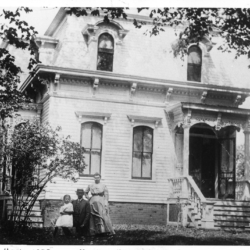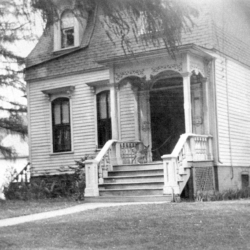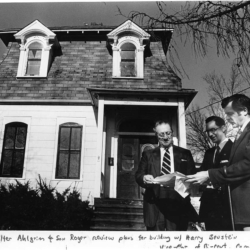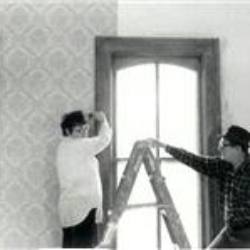George Clayson House
Clayson House Museum
The Clayson House Museum, located at 224 E. Palatine Road. Palatine, IL 60067
Open to the public:
Tuesday 9:00 am – 4:00 pm
Thursday 12:00 pm to 4:00 pm
Sunday 1:00 pm to 4:00 pm
For tours and educational programs or if you are interested in volunteering, please call the Museum Caretaker at 847-991-6460 or email us at palatinehistoricalsociety@gmail.com
The Clayson House Museum is operated by volunteers and board members of the Palatine Historical Society and maintained by the Palatine Park District.
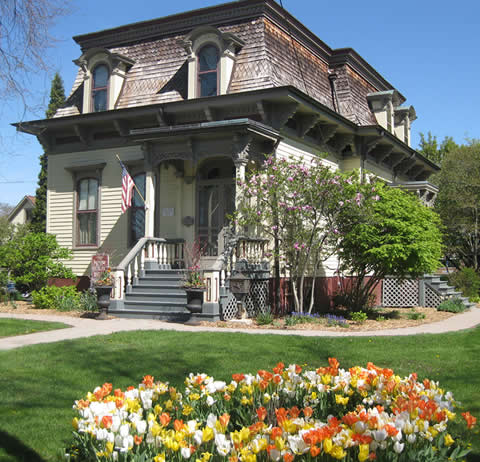
Clayson House Museum
Clayson House History
The Clayson House was constructed as a residence in 1873 by George Clayson, a nurseryman who served on the Palatine Village Board. The property was purchased by the Palatine Public Library in 1976 and has been maintained and operated since then as a museum by the Palatine Park District. It is the home of the Palatine Historical Society. Its restoration was undertaken as a bicentennial project by the citizens of Palatine Township and the Palatine Historical Society. It was placed on the National Register of Historic Places on March 21, 1979 and opened to the public on October 7, 1979.
It Began in 1872 . . .
James Wilson sold the land bounded by what is now Palatine Rd., Northwest Hwy., Wood St. and Oak St. to George Henry Clayson in 1872. Clayson began planting fruit trees and grape vines on the property and in 1873 had a house built for his family. It was built by a local carpenter likely choosing from a pattern book such as this one. The house is considered to be French Second Empire in style because of the Mansard roof with dormers. It also has some Victorian Italianate features in its bay window and brackets. It cost about $2300 to build.
Mr. Clayson later sold 1 1/2 acres to Charles Cutting and in 1881 sold the rest to Moses Brown. The Claysons had already moved to Nunda (now Crystal Lake) to expand on his nursery business. The Brown family lived on Chicago Ave. until 1901 and then sold the house to William Meine. In 1904 Meine conveyed the property to Henry Wolff.
The Wolff family lived in the house longer than anyone else. Henry and his wife, Carrie, had one child named Elsie. Mr. Wolff died in 1945. Elsie and her husband, Julius Drexler, made some changes in the house. They took out the back stairs and had a bathroom installed near the landing on the second floor. The second floor was rented to Ralph and Beatrice Darling. At some point a hip roof was placed over the Mansard roof. After Elsie’s death in 1965, Julius subdivided the property. Julius sold the land to Elmer Plote in 1969 and moved to Des Plaines. Plote conveyed the house to John & Roberta Springer and they in turn conveyed it under a trust to Citizens Bank & Trust in 1972. The Palatine Public Library bought it from the bank in trust with the Palatine Historical Society and the Palatine Park District in 1976 in recognition of the American Bicentennial. Restoration architect Wilbert Hasbrouck was hired to return the house to its original style and floor plan. It is painted its original color. The George Henry Clayson house now stands as a magnificent reminder of Palatine’s Victorian past and is on the National Register of Historic Places.
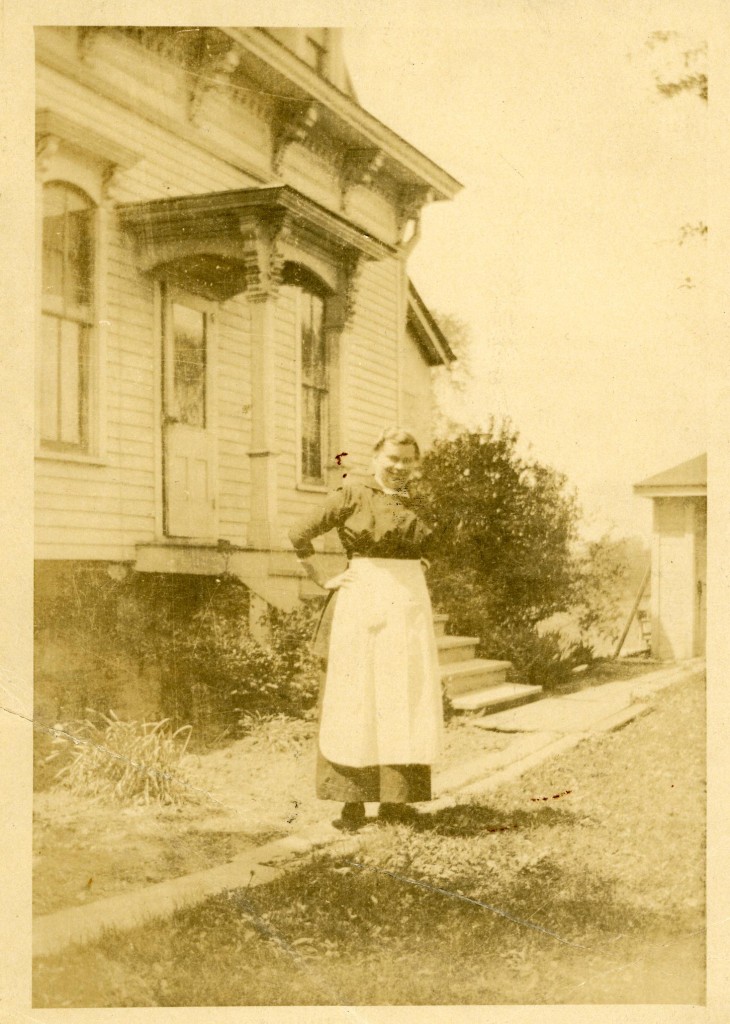
Clayson House pre-1910

George Henry Clayson
George Henry Clayson
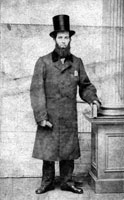
George Henry Clayson was born in Cuba, New York in 1833, the son of Benjamin and Eliza Salmon Clayson. He grew up on his father’s farm and attended school. His father died when he was 16; he farmed and clerked in a store in order to take care of his mother and sister.
In 1860, he left New York and came to Chicago where he first clerked in a mercantile business and then owned a photography business on Clark Street. In 1863, he married Martha Harris, daughter of Asahel and Clarinda Harris of Palatine. In 1867, Clayson purchased ten acres of land from Palmer Webster, land that encompassed the entire block surrounded by Palatine Rd., Northwest Hwy., Wood St., and Oak St. He used this property as a nursery where he grew fruit trees and grapes. In 1869 he was elected a trustee by the village board to fill a vacancy. The 1870 census shows that he lived on Benton Street with his mother, wife, and two children, Frank and Charles. In 1873, Clayson contracted to build the house on his property that is now the Clayson House Museum; it cost approximately $2300.
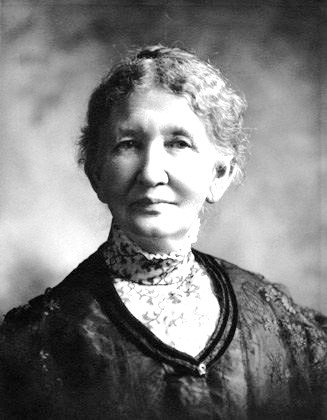
Martha Clayson
Claysons leave Palatine for Crystal Lake
Our research seemed to reach a dead end. Then along came a big discovery by Joan Murray, a genealogist and member of our Board of Directors, in the Arlington Heights Library. In a book on early Phoenix, Arizona burials, she found George Clayson’s name. In a trip to Arizona, Joan found this was indeed our George and through diligent searching and months of work she discovered much more about him. It seems that he did not move very far away at first. In 1877, the Claysons moved to Nunda Township in McHenry County, which is now Crystal Lake. There he owned another fruit farm, this one of 107 acres. He had 3500 cherry trees, 1000 grapevines, and 10 acres of raspberries. Two years later he built a clover and fruit dryer. He was now growing cucumbers, corn, sugar cane, and clover in his fields and hired many workers. He opened the Crystal Lake Pickling and Preserving Company. It seems he was a tireless business man. Very little more is known about the Claysons except that by 1880, according to the Federal Census, they were gone from Palatine. His property was sold to a Moses Brown around 1880. A single sentence was found in an 1892 newspaper microfilm that noted Mrs. George Clayson was in Palatine visiting relatives and that she had been living in Arizona for the last six years.

Martha Clayson 1860
Busy in McHenry County
The Nunda newspaper, published weekly, with ads and details about the lives of its residents was where Joan found this information and a lot more. He was on a committee to raise funds for the building of a new school. He was a teacher and superintendent of Sunday School. He built two more dryers in other towns and another pickling factory in Union. He was on the town’s first school board. His dryer burnt down and a new one was built in two weeks. He had evergreen trees stolen from his nursery; he was hit by a tackle block and injured; his horses ran away with him and he was dragged on the ground and his wife badly hurt after being thrown from her buggy. The news items go on and on. George Clayson was a well-known man and also a fairly wealthy one in McHenry County.
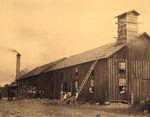
Clayson Dryer Factory
Arizona Adventure
The Claysons had four more children in Nunda: Daisy, Roy, Harold, and a baby that died. Their son, Charlie, also died in Nunda. The family went on their first vacation in the winter of 1883-84 to Phoenix, Arizona. George came back with “glowing reports of the grand future awaiting development” in that area. The following fall, the family returned to Phoenix for the winter season. They did not return to Nunda until March of 1885 with the news that George had purchased property in Phoenix and had “set out a fine orchard” before coming home. Within a month the Clayson property was put up for sale. Buildings, nursery stock, livestock, and machinery were all being sold separately. He continued to dry clover, over 50,000 lbs. by September. He also announced his intention to build a new house and buy a piece of property. In December the Claysons were on their way to Arizona again and George announced he would head two excursion parties from Chicago to Arizona that winter. In February of 1886, he sent a letter to the Nunda Herald telling people about the excursion party’s adventures, how warm and wonderful the weather was, that fruit was ripe on the trees, that land could be bought for $10 to $12 an acre, and that people were flocking to the area from all over.
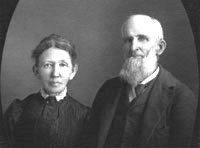
George & Martha Clayson
When the Claysons returned home in April the Herald reported that George Clayson was an agent for the sale of Arizona land. Frank Clayson remained there for a few more months. George continued to be active in his church and community. The new house was not finished until the fall and in December George and Martha left for Arizona. They took only the youngest child, Harold, aged five. Just two weeks later the boy died in Phoenix of diphtheria. The couple returned home in April of 1887 and George immediately began building new fences and otherwise improving the new home. The Claysons did not go to Arizona the following winter though George did a lot of traveling in the East.
In January of 1889 an ad appeared in the newspaper for the sale of the Clayson house. The Nunda property was said to have a good well, cistern, and a ‘”splendid cellar” and would be sold at a great bargain. The property was eleven acres with a vineyard and an acre of berries. At the end of January, the Claysons left Nunda to take up permanent residence in Phoenix. Frank remained behind to continue attempts to sell the house. In May, the house was rented out to a family who later bought it.
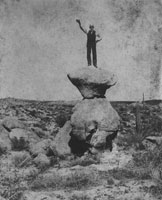
George Clayson in Arizona
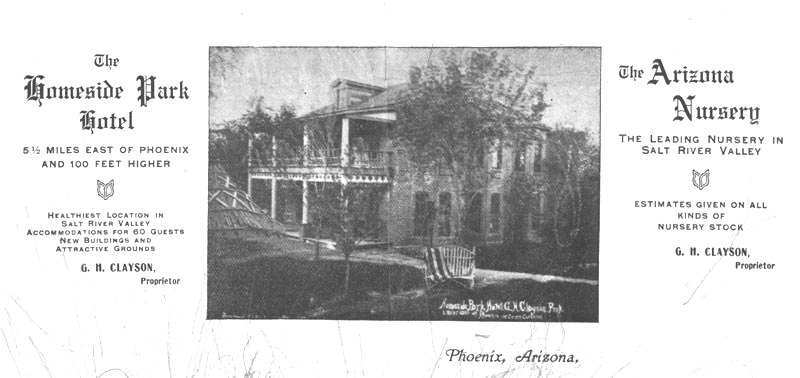
The Claysons' Hotel
George’s 80 Acre Ranch
The 80 acre ranch George had bought in the Salt River Valley was five miles outside of what was then Phoenix. He developed 47 acres of that land into a nursery, primarily with citrus trees, especially oranges. Because there was already a large number of tourists in that area he built a large hotel on his land which he called the Homeside Park Hotel. George was active in the Methodist Church in Phoenix as well as the Masons and the I.O.O.F. (Oddfellows).

Clayson with his Fruit Trees
George Buried in Phoenix
George H. Clayson died on February 11, 1904. He was buried in the Oddfellows section of the Pioneer and Military Memorial Park Cemeteries in Phoenix. The cemetery was owned by the city; in 1914 the active use of the cemetery ended. It suffered much vandalism over the years and it wasn’t until the 1980’s that a fence was built to protect the cemetery.
Joan Murray searched the cemetery for Clayson’s grave and that of his son Frank who died a year later of alcoholism, but none was found. Fortunately, there are surviving burial records and the location is known. Six days after George’s death his will was presented in court. He left all his personal and real property to his wife. He also left $2,000 each to his daughter, Daisy, and his son, Roy. George already knew of Frank’s problem with alcohol and so his will stipulated that if he should reform and lead a sober life, he would also get some money from the estate. Frank already owned 10 acres of the ranch. Some of the original 80 acres had already been sold.
The Historical Society is grateful to Joan Murray and Marg Plank for gathering all these details (and more) for preservation at the Clayson House Museum.
The burial record of the cemetery:
- Clayson, Frank H., 19 May 1905, , IOOF, no
- Clayson, George Henry, 11 Feb 1904, 73, IOOF, no
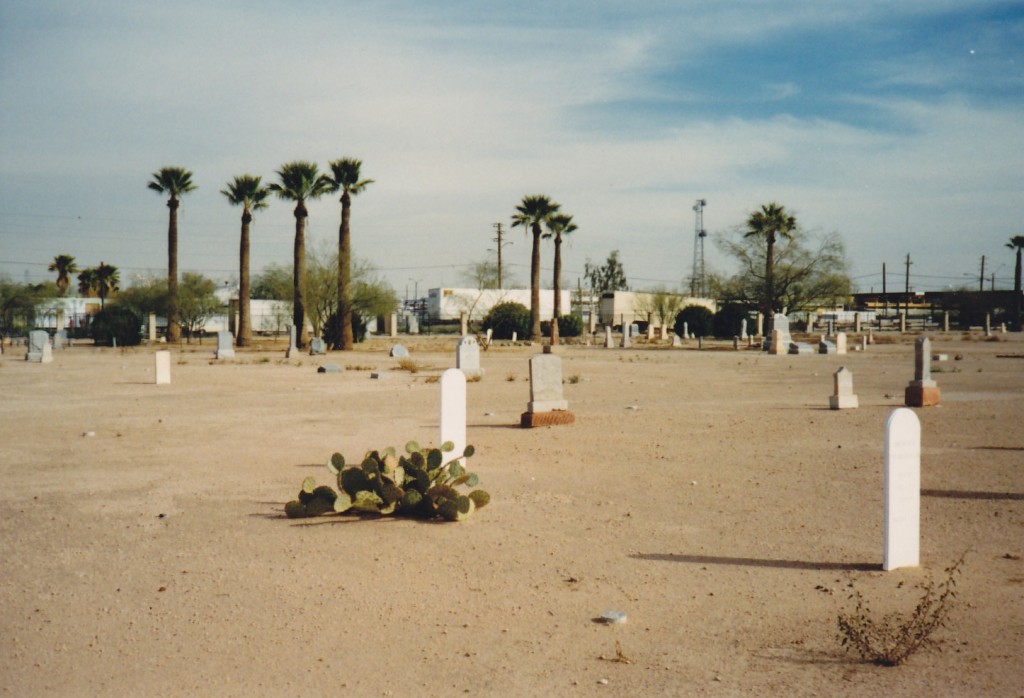
Pioneer & Military Memorial Park Cemeteries in Phoenix
A Phoenix Pioneer
Evidence shows that George Clayson was a good businessman and an important Phoenix pioneer. He invested in the Phoenix area just as it began to grow, a few years after the original one square mile of Phoenix was incorporated, and just at the time the old Cross Cut Canal was built, providing water to irrigate desert land into fertile fields. Five separate Arizona land purchases made between 1885 and 1900 have been located – one for lots in one of the first subdivisions of Phoenix, another one in the west valley with partners of the Phoenix Packing Company, and three land purchases along the Cross Cut Canal. Today the land is within Phoenix city limits. The Clayson Ranch was well located on the Cross Cut Canal, on a main road out of town, easily found by heading in the direction of Camelback Mountain, a Phoenix landmark. In The Little Colonel in Arizona, a book written by Annie Fellows Johnston for teens at the beginning of the 20th century, which mentioned several Phoenix area landmarks, one of the characters rode out of the city of Phoenix in the direction of Camelback Mountain, and picked orange blossoms as he passed Clayson’s Ranch. In 1890 the Clayson Ranch was praised in the Arizona Republican newspaper as having orange and grapefruit orchards which were “sights that should be seen by every resident and shown to every visitor”.
Desert Claysons
One variety of grapefruit cultivated on Clayson’s Ranch was recorded in pomological journals and in records from other ranches under the name “Desert Claysons”. There are records of a Clayson Packing Company in Phoenix. George contributed a testimonial to the Arizona Improvement Company for their brochure, which he titled “How an Old Illinois Horticulturist Feels About The Fruit Prospects of the Valley After Five Year’s Residence.” In the article he claimed there was “no limit to the possibilities of this grand country”. At the turn of the last century people suffering from tuberculosis spent the winters in tents in the Phoenix area. In The Little Colonel in Arizona a family stayed in a tent near Clayson’s Ranch. The Medical Sentinel published in 1902 reports that a Dr. Parker was staying in a tent “comfortably located at Clayson’s Ranch, next to a canal fed with clear mountain water”. George died in 1904, but the Southern California Practitioner published in 1908 reported that “Clayson’s ranch, on the outskirts of Phoenix, Arizona, long noted for its finely-flavored oranges and delicious grapefruit, has been purchased by a Dr. Stafford”, who intended to conduct an open-air resort there. Even the history of Trinity Episcopal Church in Phoenix includes the Clayson name. One of the church’s leaders, Bishop Julius Atwood, first came to the Phoenix area when his wife was ill with tuberculosis. According to church history they stayed at Clayson’s Ranch, where Mr. Atwood (not yet a bishop) got permission to minister to the large number of sick people living in tents around him.

Desert Claysons
The Clayson Homes
The Clayson family seemed comfortable living in a home near streets named Chicago, Oak and some form of Wood. The Clayson House Museum is located on Palatine Road, previously named Chicago Ave, and the former Clayson land in Palatine is bordered by Oak Street and Wood Street (named for Joel Wood). A house that the Claysons built in Nunda (Crystal Lake) is located on the south end of a park, at the corner of Oak Street and Woodstock Street (named for the town of Woodstock). The last three parcels of land purchased by the Claysons in Phoenix includes a park, an Oak Street, plus several other streets with tree names, and is bordered by 44th Street, formerly known as Chicago Avenue.
All photographs with the exception of the cemetery photo are courtesy of Brian Kelly.
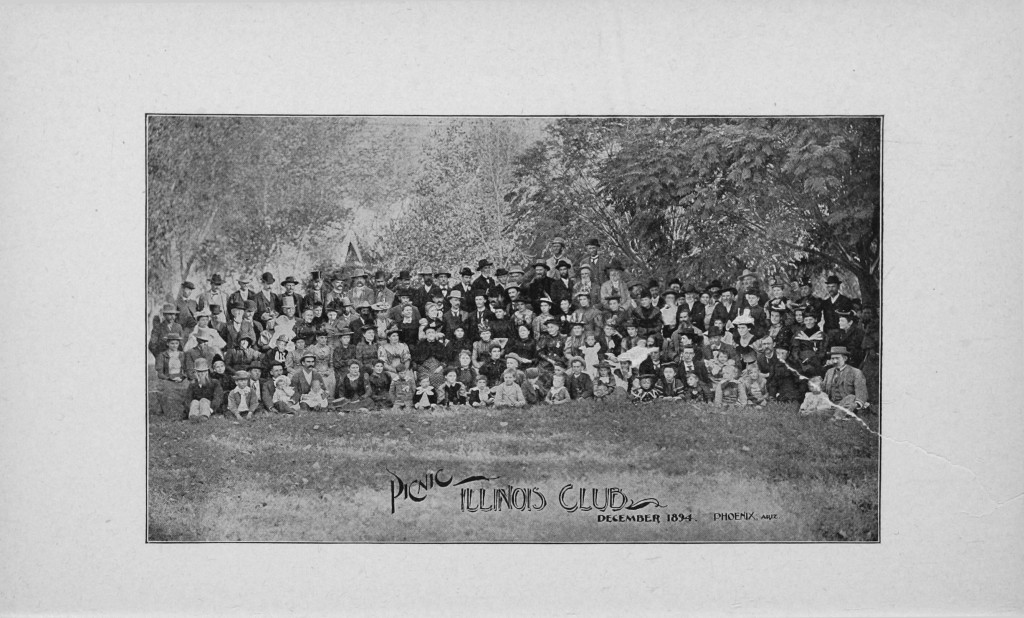
The Illinois Club
“A people without the knowledge of their past history, origin and culture is like a tree without roots.
– Marcus Garvey
